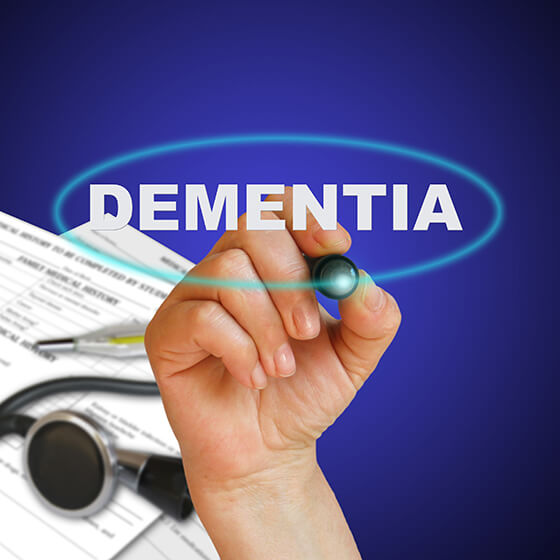This post cotinues the review of the differetn types of dementia.
Dementia with Lewy Bodies
Dementia with Lewy Bodies is a type of dementia associated with Alzheimer’s and Parkinson’s diseases. It is characterized anatomically by the presence of Lewy bodies, which are round clumps of proteins in the neurons. The sufferer will have visual hallucinations, like seeing colors, shapes, animals or people that are not there or having conversations with deceased loved ones. Many people with Parkinson’s disease eventually develop problems with reasoning and thinking. Also, people with this form of dementia experience movement symptoms, such as rigid muscles, a shuffling gait and trouble initiating movement like someone with Parkinson’s would experience.
Alcohol dementia
Alcohol dementia is a form of dementia triggered by long -term or excessive drinking that results in nerve damage and memory loss. It causes severe cognitive problems in most alcoholics and up to 10 percent of patients diagnosed with dementia have a history of prolonged alcohol abuse. Any person that drinks excessive amounts of alcohol for a substantial amount of time is at risk of developing alcohol related dementia. Certain people have a higher risk of developing it than others. A man who drinks more than five alcoholic drinks everyday has a greater risk than someone who does not drink; the same goes for women who have more than three drinks daily. Many people believe that only seniors are at risk for developing dementia. This is especially untrue regarding alcohol dementia, which can occur as early as age thirty. The onset and severity of this form of dementia is directly associated with the amount of alcohol that a person consumes over their lifetime.
Pick’s disease
Pick’s disease is a rare disease that causes destruction of nerve cells in the brain. It is believed to be one of the causes of frontotemporal lobe degeneration. While some of the symptoms can initially be relieved, the disease worsens and patients usually die within two to ten years. Symptoms usually include speech difficulties, behavioral changes, and changes in social conduct, over-activity, and memory loss.
Parkinson’s related dementia
The changes caused by Parkinson’s disease start in a region that plays a main role in movement of the body. As the damage slowly spreads, it often begins to affect mental functions, like memory, concentration, and the ability to make decisions. A predicted 50 to 80 percent of patients diagnosed with Parkinson’s eventually develop dementia as the disease progresses. The average time from diagnosis of Parkinson’s to the onset of dementia is about 10 years. Common symptoms are changes in memory, concentration and judgment; muffled speech, visual hallucinations, delusions, depression, and irritability.
Senility
Senility is a general term for various mental disorders, physically and mentally, occurring in old age. Although we have previously talked about different forms of dementia, senility can be a part of the natural process of getting older.
We at Carefect Home Care Services know this can be a stressful time for you, but it is always important to remember that if your family member says something hurtful to you, it is the syndrome talking, not the person. Working and perhaps taking care of children while helping your aging loved one will put unneeded stress on your shoulders and on your elderly family member, as well. If you are struggling with a family member that has dementia you should consider educating yourself with the topic of homecare. Experienced caregivers will nurture and support your aging loved one in the comfort of their own home. Your senior family members do not have to go through the confusing and traumatic process of leaving their prized possessions and/or pets behind to live in a long term care facility. However, here are some tips to help you make your family member more comfortable:
- Join a support group for dementia patients. It will help to relieve the pressure of looking after the patient through sharing experiences.
- Take advantage of social services such as adult day care centers.
- Explain their condition to your family and friends to gain their understanding and support.
- Make changes in your home environment to prevent accidents, like keeping the furniture against the wall and avoiding leaving the corners of furniture out for your family member to bump into them.
- Establish a daily routine for your elderly family member to reduce feelings of confusion.
- Your elderly family member should wear a wrist bracelet labeled with their name and telephone number. Also, always have a recent photo at home so that you can use it to help find them if they ever went missing.
If you use these tips and have the help of a skilled caregiver, your loved one will get the care they desperately need.

